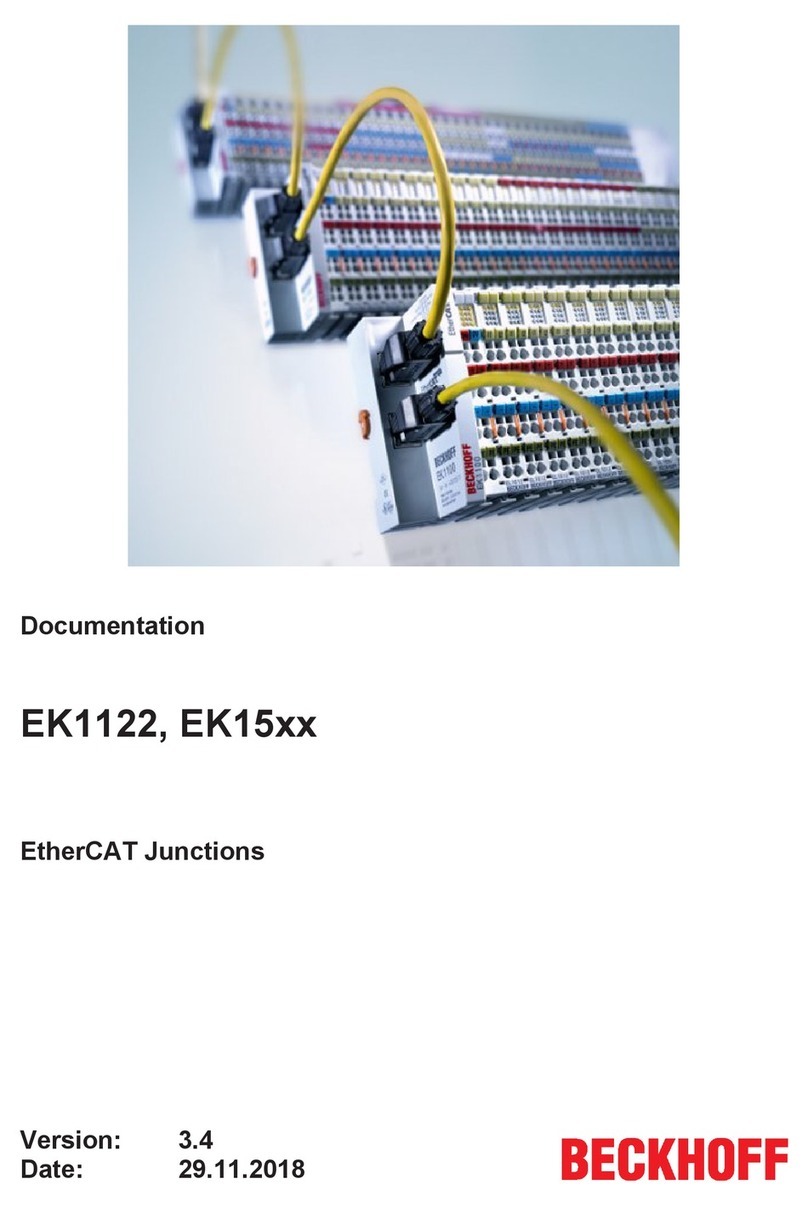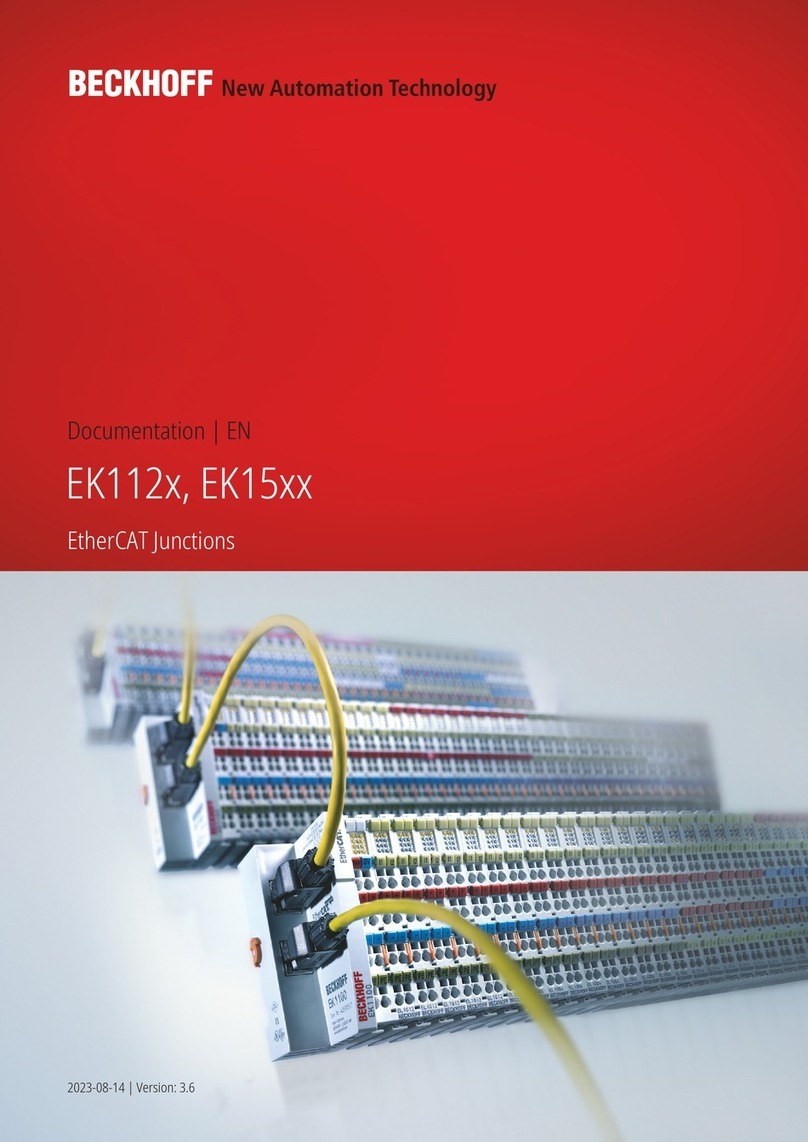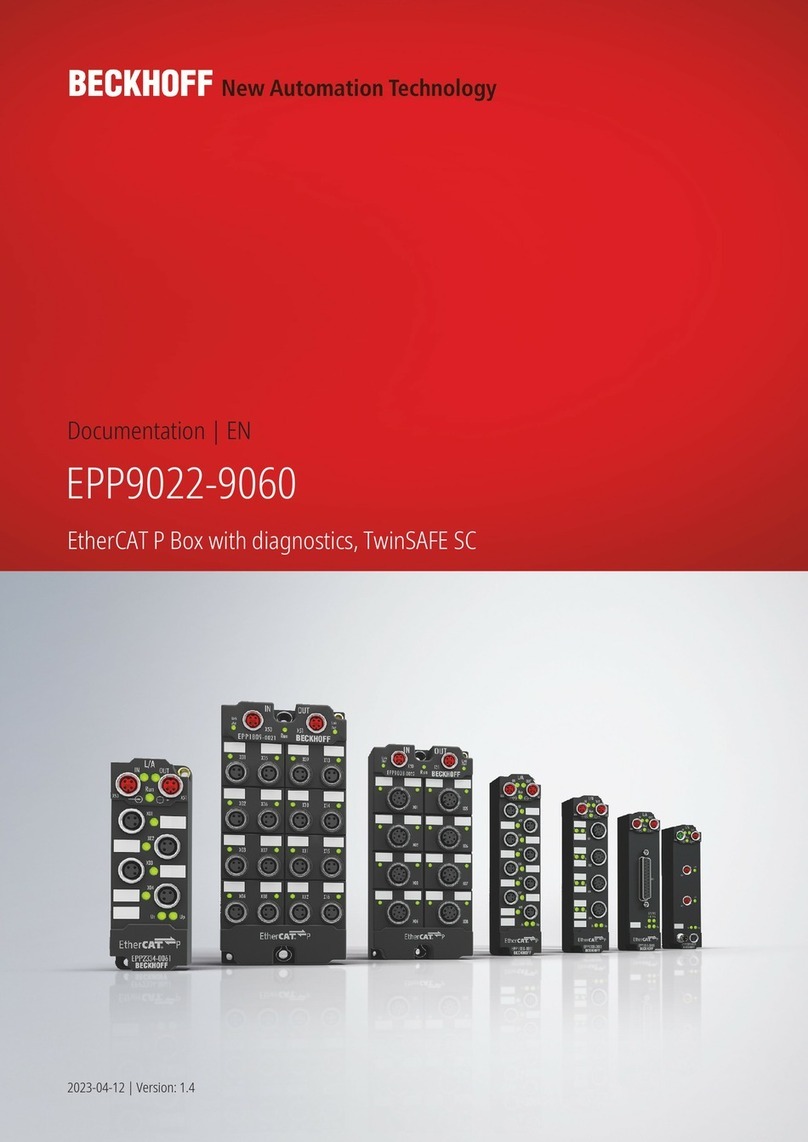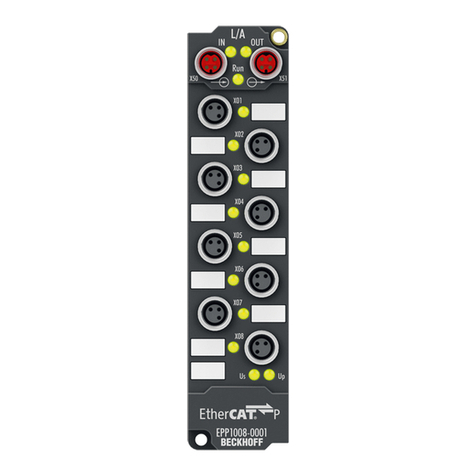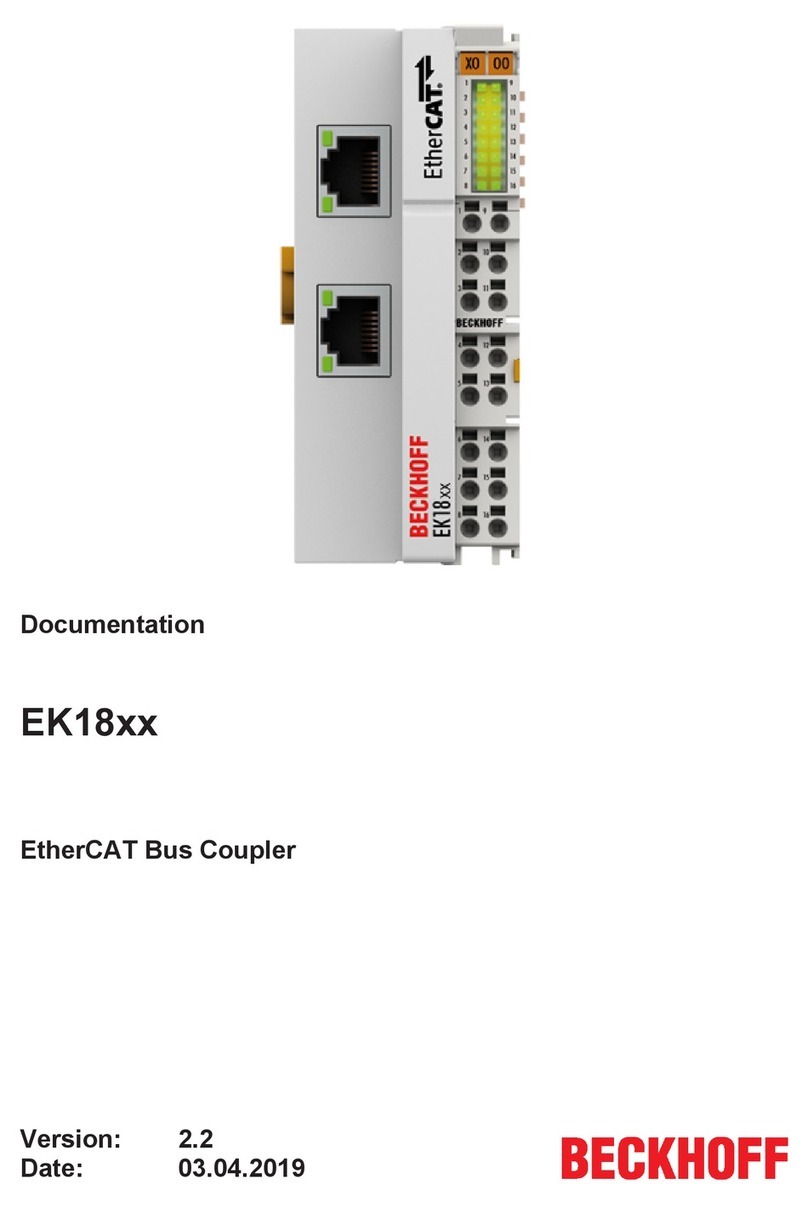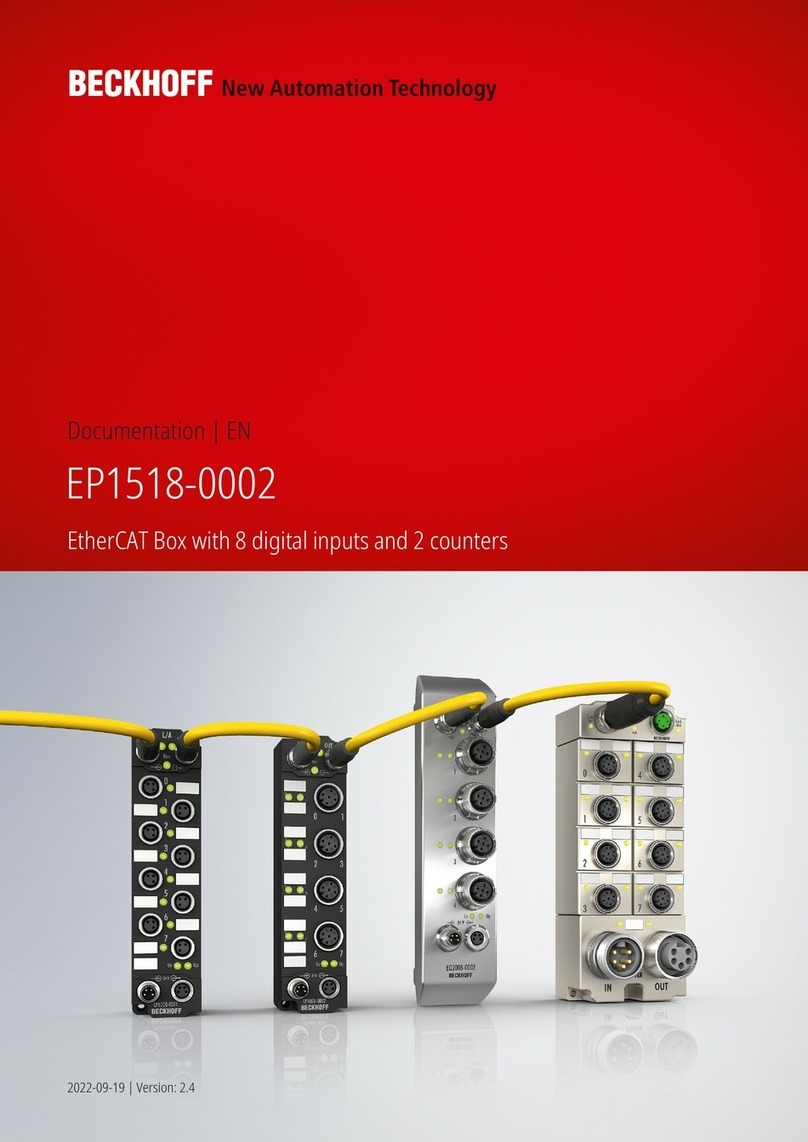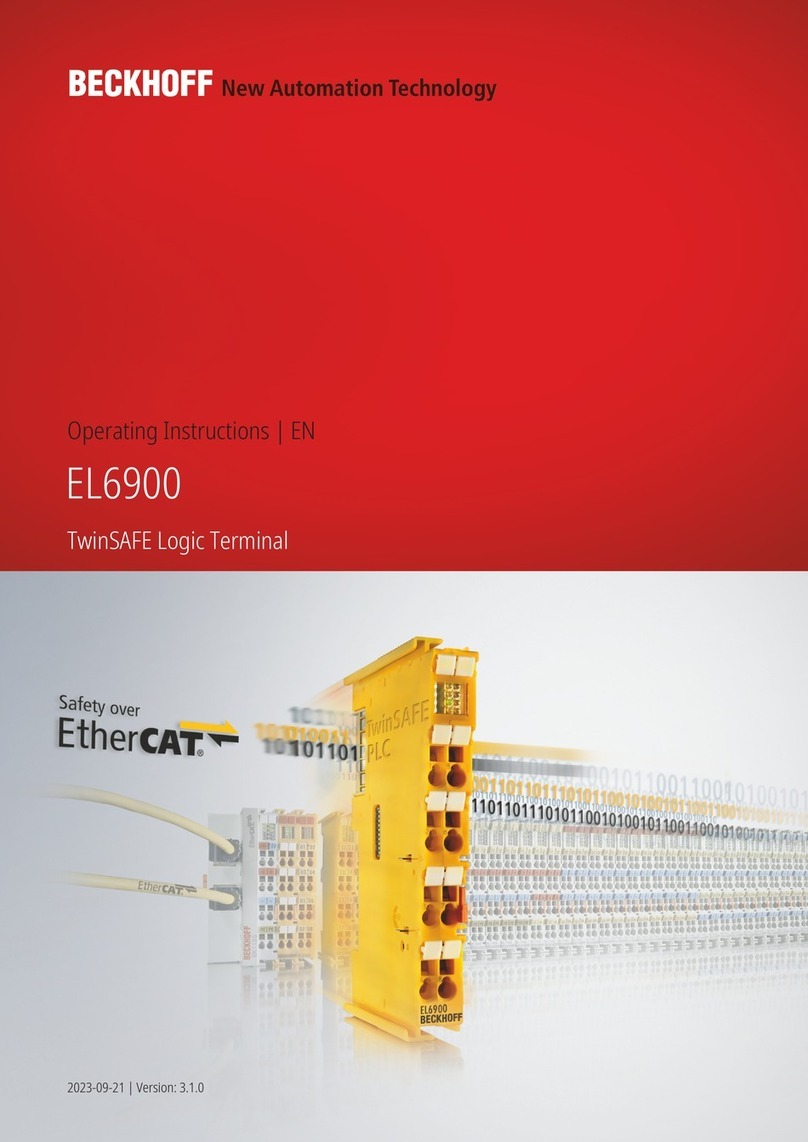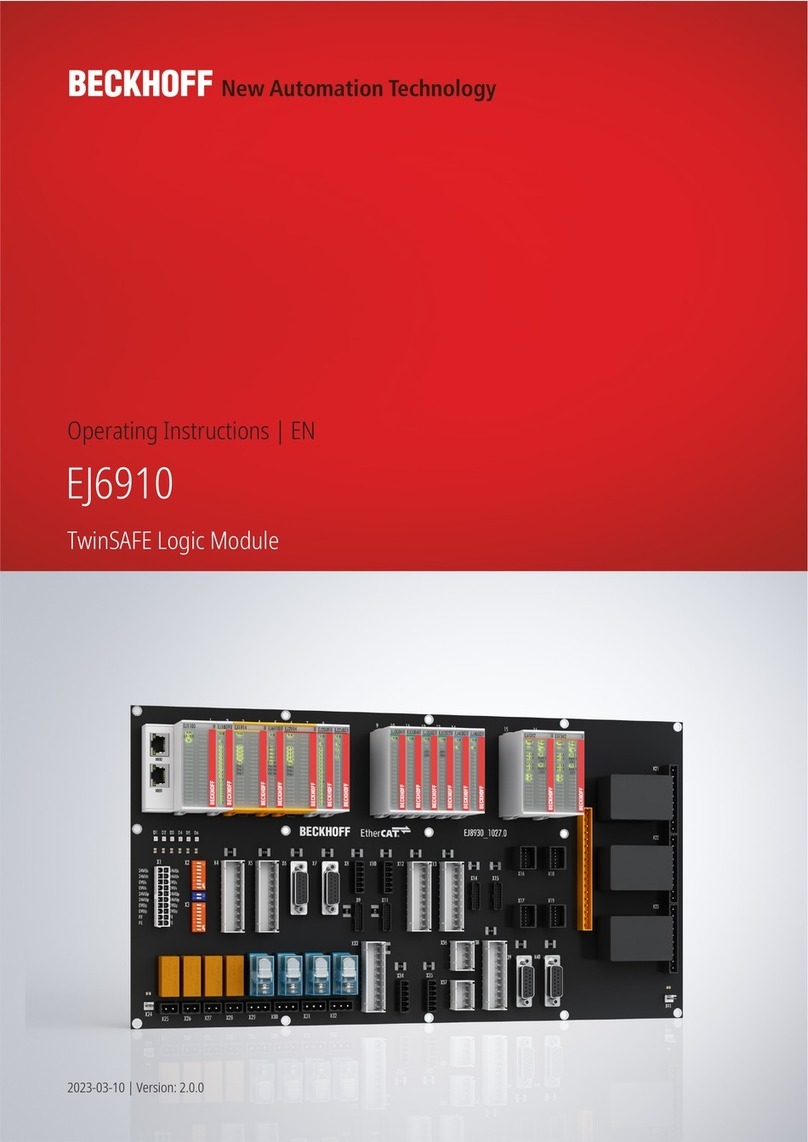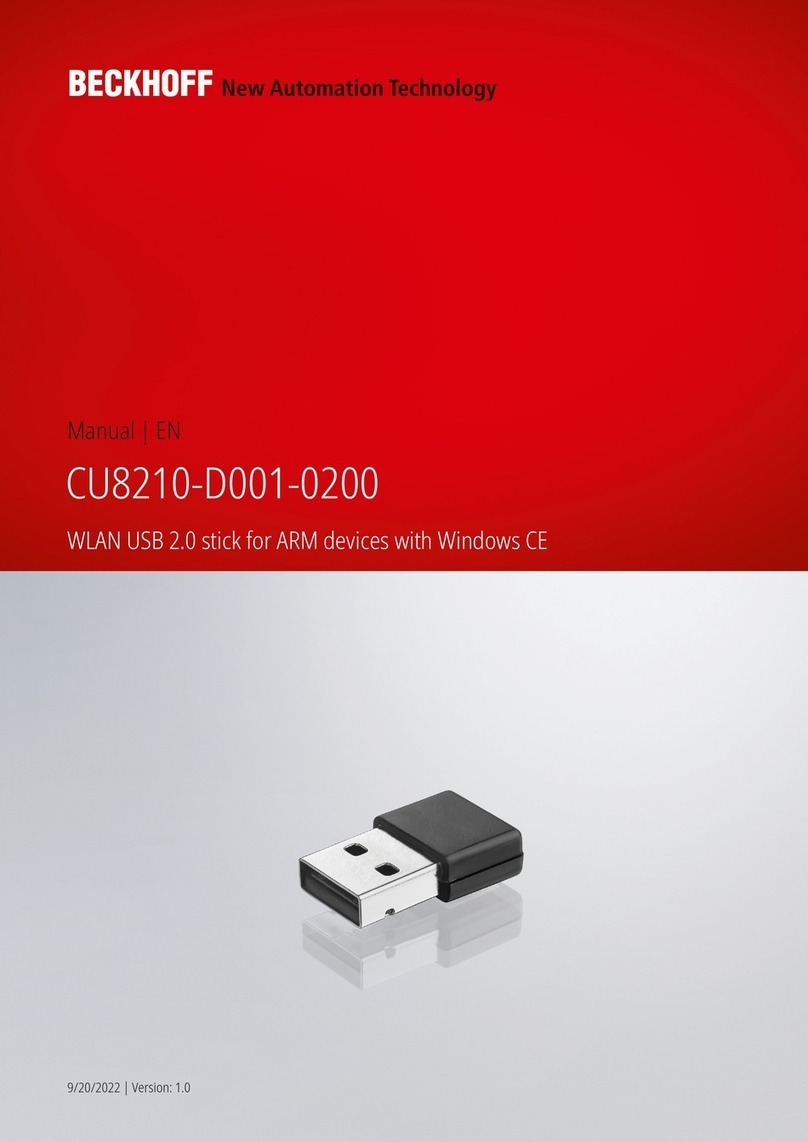
Table of contents
EP9300-0022 3Version: 2.3
Table of contents
1 Foreword ....................................................................................................................................................5
1.1 Notes on the documentation..............................................................................................................5
1.2 Safety instructions .............................................................................................................................6
1.3 Documentation Issue Status..............................................................................................................7
1.4 Notes on information security ............................................................................................................8
2 EtherCAT Box - Introduction ....................................................................................................................9
3 Product overview.....................................................................................................................................11
3.1 Introduction......................................................................................................................................11
3.2 Technical data .................................................................................................................................12
3.2.1 Profinet ............................................................................................................................ 13
3.3 Scope of supply ...............................................................................................................................13
4 Mounting and connection.......................................................................................................................14
4.1 Mounting..........................................................................................................................................14
4.1.1 Dimensions ...................................................................................................................... 14
4.1.2 Fixing ............................................................................................................................... 15
4.1.3 Functional earth (FE) ....................................................................................................... 15
4.2 Connections.....................................................................................................................................16
4.2.1 Connector overview ......................................................................................................... 16
4.2.2 Profinet ............................................................................................................................ 17
4.2.3 EtherCAT output .............................................................................................................. 19
4.2.4 Supply voltages ............................................................................................................... 21
4.2.5 Diag port .......................................................................................................................... 23
4.3 UL Requirements.............................................................................................................................24
4.4 Disposal...........................................................................................................................................25
5 Commissioning and configuration ........................................................................................................26
5.1 IP address .......................................................................................................................................26
5.2 Profinet name ..................................................................................................................................26
5.3 Profinet configuration.......................................................................................................................27
5.4 EtherCAT configuration ...................................................................................................................30
5.5 Configuration example.....................................................................................................................33
5.6 CoE data access via Profinet ..........................................................................................................35
5.7 Multi-configuration mode .................................................................................................................38
5.8 IO-Link .............................................................................................................................................41
5.9 EBus Error Behaviour......................................................................................................................44
5.10 Activating the web page ..................................................................................................................45
5.11 Decommissioning ............................................................................................................................46
6 PROFINET.................................................................................................................................................47
6.1 PROFINET system presentation .....................................................................................................47
6.2 Representation of an EtherCAT slave on PROFINET.....................................................................49
7 FAQ ...........................................................................................................................................................54
8 Error handling und diagnosis.................................................................................................................55
8.1 LED display .....................................................................................................................................55
